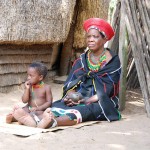 The bride price payment is a key element of the marriage contract in many sub-Saharan African countries, and particularly in Senegal. Contrary to a dowry payment, where the bride and her family give the marriage payment to the groom and his family, a bride price payment is defi
ned as the money or wealth transfer given by or on behalf of the groom to the bride and her family upon the marriage of the couple. Such a bride price system raises several concerns related to the economics of the marriage market, gender empowerment and intra-household bargaining power.
The bride price payment is a key element of the marriage contract in many sub-Saharan African countries, and particularly in Senegal. Contrary to a dowry payment, where the bride and her family give the marriage payment to the groom and his family, a bride price payment is defi
ned as the money or wealth transfer given by or on behalf of the groom to the bride and her family upon the marriage of the couple. Such a bride price system raises several concerns related to the economics of the marriage market, gender empowerment and intra-household bargaining power.
In a new IZA discussion paper, Linguère Mously Mbaye and Natascha Wagner analyze the effects of bride prices on fertility decisions. Using a unique panel dataset of married couples from rural Senegal, the authors find that women who receive a higher bride price have fewer children. The authors interpret their results in the following way: A marriage represents a social contract between a man and a woman with clearly defined roles. The husband takes the woman and gives her economic security. His appreciation of the bride and the value she represents for him is expressed by the bride price he pays. Whenever the groom is willing to give a higher bride price, he demonstrates his willingness to treat his wife well and avoid the risk of divorce, which would correspond with a financial failure of the investment. In turn, from the bride price payment received, the women can judge whether she needs to gain reputation within the groom’s family by giving birth to many children.
In line with this interpretation, the authors show that the bride price is an especially strong predictor of fertility in poor, low-educated and polygamous households. In contrast, it has no effect on fertility decisions in monogamous households and for love marriages.